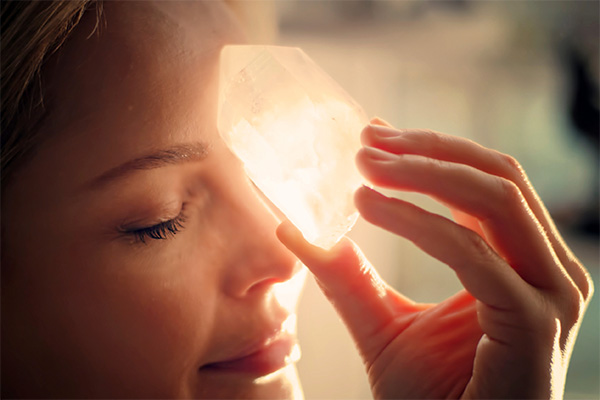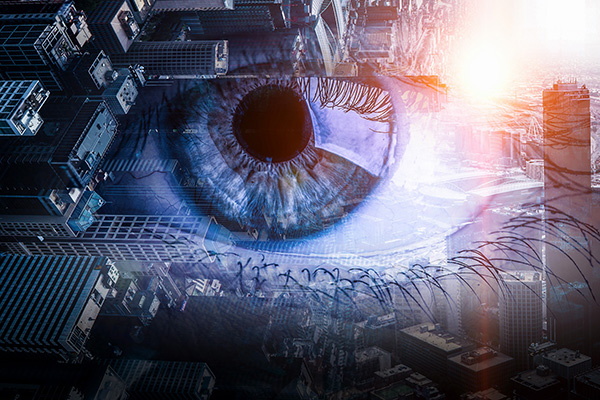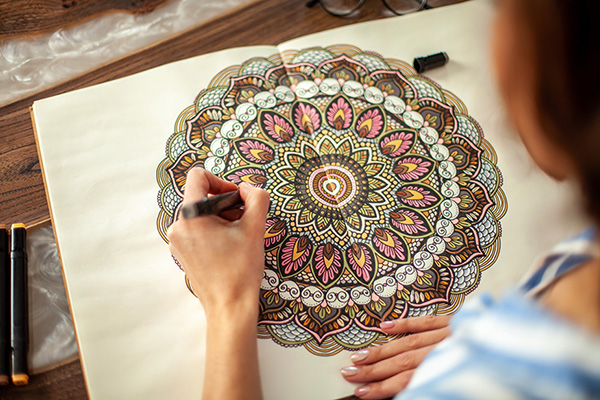right brain
Balance Your Mind With Crystal Energy
 The human brain is a dual force, with the left and right hemispheres complementing each other to create a balanced mind.
The human brain is a dual force, with the left and right hemispheres complementing each other to create a balanced mind.
Each side of the brain brings its own gifts to the whole, working together to shape our unique perceptions and experiences.
The left brain is known for its logical, structured, and analytical approach to processing information, excelling in tasks like reasoning, mathematics, and language.
In contrast, the right brain is more intuitive, imaginative, and emotionally expressive, fueling creativity, visual thinking, and spiritual insight.
This division of cognitive function influences how we think, solve problems, and interact with the world, both internally and externally.
In the realm of energy work and healing, various crystals and stones support and enhance the natural strengths of each brain hemisphere, promoting overall mental and emotional harmony and balance.
Whether you are seeking increased focus for problem solving or a boost in artistic expression, the right combination of crystals can support a harmonious mind that fosters both intellectual and creative growth.
By setting clear intentions and using the appropriate crystals and stones regularly, you can harness their energies to align both hemispheres of the brain and promote an integrated approach to life.
In this sacred balance, the mind and soul find unity, creating a deeper sense of wholeness and fulfillment—a fusion of logic and intuition, structure and flow, thought and feeling.
The Psychic Insights Of Remote Viewing
 In my own journey of intuitive development, I have been exploring the possibilities of Remote Viewing. It is a psychic skill that is not often talked about.
In my own journey of intuitive development, I have been exploring the possibilities of Remote Viewing. It is a psychic skill that is not often talked about.
Remote viewing is a clairvoyance technique that allows you to gather information about a distant or unseen target, such as a specific location, object, or event, using extrasensory perception (ESP) or “anomalous cognition.”
Remote viewers have minimal or no prior information about the target and rely solely on their capacity for “nonlocal awareness” (distant psychic sensing) to explore and describe it.
Remote Viewing gained popularity in the 1970s and 1980s, primarily through the efforts of the U.S. government-sponsored Stargate Project.
It is essentially the practice of clairvoyance using a formalized technique or protocol developed by the U.S. military during the Cold War as a tool for intelligence gathering. Over time, however, it has transcended its military origins and become a subject of interest to those seeking to tap into their latent psychic abilities.
Although a number of remote viewing studies have been conducted by individual researchers, most of the activity in this field to date has been conducted by three major laboratories: The Stanford Research Institute (SRI) in Palo Alto, California, the Princeton Engineering Anomalies Research Laboratory (PEAR) at Princeton University, and the Mobius Laboratory in Los Angeles, California.
How To Do A Tea-Leaf Reading
 When I do a teacup reading, I let my mind to run free as I interpret the symbols in the tea leaves for the client. There are standard traditional guidelines as to what different shapes may symbolize, but I prefer to let my intuition do the talking.
When I do a teacup reading, I let my mind to run free as I interpret the symbols in the tea leaves for the client. There are standard traditional guidelines as to what different shapes may symbolize, but I prefer to let my intuition do the talking.
Interpretation of the tea leaves is subjective, and there is no one right way to do it. Different readers will interpret the same patterns differently.
However, there are some common symbols one will often find in the bottom of the cup include animals, human faces, and all kinds of everyday objects. Symbols grouped together can create a theme, and sometimes the tea leaves spell out letters of the alphabet or numbers.
Tea-leaf reading is also known as tasseography, tasseomancy or tassology. Tasseography is also done by reading wine sediments and coffee grounds. This divination practice possibly originated in China, where tea was first cultivated, and may have evolved from the Chinese traditions of divining the patterns left by the dregs of wine in a cup, as well as the patterns created by the smoke from incense sticks.
Tea itself was first introduced to Europe in the 17th century and thus tea-leaf reading spread to other parts of the world. Among the first Europeans to embrace the practice were the traveling Romani people, who sometimes offered is as a door-to-door service. Tea-leaf reading also became popular in Victorian times as a parlor game.
Like Tarot reading or scrying a crystal ball, tea-leaf reading is a divination method for accessing the universal consciousness via the subconscious mind. Slowing down the rational, analytical mind allows us to focus on our intuition to receive divine guidance.
Using The Mandala In Your Spiritual Practice
 Years ago, I taught a class on sacred geometry. My favorite section of the class was related to using mandalas as a tool for the inward journey and I would like to share this practice with you.
Years ago, I taught a class on sacred geometry. My favorite section of the class was related to using mandalas as a tool for the inward journey and I would like to share this practice with you.
When using a mandala as a form of meditation you begin by creating a large circle. I have always found it easier to start with a graph based on concentric circles, but others start with just a circle and their imagination or intuition. Start at the outer edge of the circle to begin your session and work your way around the outer edge. Gradually work your way to the center of the mandala – this represents the inward journey.
We start by creating patterns and designs on the outside of the circle. This is the largest part of the circle and represents the universe. Understanding the expansiveness of the universe we can feel very small and insignificant, so it is important to move inward to find our grounding within the cosmos.
As we move inward in our mandala we contemplate our planet, then our country or large group of people we identify with the most. For many people this can be a religious tradition. We then move to contemplating our acquaintances, family, and friends.
Towards the center many mandala meditators will create four sides, or a square that leads to the center of his or her mandala. These four sides represent the four cardinal points, South, West, North, and East.
Seeing Colors In Music
 When my dad became terminally ill in 2013, I turned to art and started painting. I had no ambition to become an artist; it was simply something I could do to take my mind off the stress of my father’s illness.
When my dad became terminally ill in 2013, I turned to art and started painting. I had no ambition to become an artist; it was simply something I could do to take my mind off the stress of my father’s illness.
I started off blending and playing with colors, and eventually branched out to paint pictures that I soon discovered many people found appealing. When I became better at it, I started to incorporate music into what I was painting.
I would pick a song and play it on repeat to inspire me, until I was done with the painting. It was as if I was channeling the lyrics and melodies into the artwork. The music told the story of the art I was creating. I would then name the painting after that particular song and include the lyrics on the back of the canvas.
I also developed a new fascination with music and singing at that time. In time I began putting my art projects to one side, and instead began to focus on learning to sing. I continued the singing after my father passed away, and I found so much personal healing in it.
I didn’t realize how alive music really is and how intertwined my art would become with my singing. When I sing, I ‘see’ the lyrics as if they are being painted on a blank canvas in my mind’s eye. The main verses of the songs will often become large flowers, and the chorus and melodies will fill in the areas around the flowers with leaves and scrolled vines.
I learned recently that there is a scientific term for seeing colors and patterns when hearing music. It is a type of synesthesia known as chromaesthesia. Synesthesia is a perception phenomenon in which one experiences things through your senses in an unusual way. For example, a synesthete might experience a sound as a color, a word as a shape, or a number as a taste or smell. The person’s sensory perceptions are somehow combined or unified, almost like ‘wires that are crossed.’
Balancing Sun And Moon Energies
 The Sun and Moon have very different metaphysical energies and we are strongly affected by both. For example, a circumstance or event that might make you sad during the day, may completely wipe you out emotionally at night. This is because our hormones shift at night.
The Sun and Moon have very different metaphysical energies and we are strongly affected by both. For example, a circumstance or event that might make you sad during the day, may completely wipe you out emotionally at night. This is because our hormones shift at night.
I worked for many years teaching prenatal Yoga and helping expectant moms. Their emotions typically ran very high at night. Their concerns about labor was latent in their thoughts during the day, but at night they would sometimes become terrified. Most women also go into labor at night and give birth during the day.
Things become surreal at night. I believe our hormones, the Moon’s energy, and a lessened ability to see in the darkness all greatly affect us.
At night, the right side of the brain is dominant. This is our spiritual, intuitive, subconscious, feminine side. During the day, the left hemisphere of the brain is dominant. This is our practical, thinking, productive physical, masculine side.
The left side of the body is controlled by the right hemisphere of the brain and is Sun-based, while the right side of the body is controlled by the left hemisphere and is Moon based. The Moon exudes feminine energy. The feminine rules the right side of the brain, which is the maternal, emotional, creative, dreamy side. The Sun rules the left side of the brain, which is the paternal side which rules logic, production, protection, and work.
When you are having difficulty sleeping it is usually because the left hemisphere of the brain has kicked in when it should be inactive. This is when you start thinking about all the things you need to do the next day, or the stressful challenges you faced the day prior.
Do You Follow Your Head, Or Your Heart?
 As a practicing astrologer, I often assist clients who are facing the head versus heart dilemma. Should they go with what their head is telling them, or should they follow their heart?
As a practicing astrologer, I often assist clients who are facing the head versus heart dilemma. Should they go with what their head is telling them, or should they follow their heart?
“My head tells me he’s so perfect for me. He is my dream guy on paper, ticks every box. He has a successful career, earns a solid income. He is someone my kids would love, the male role-model they so desperately need,” a client recently explained.
“But my heart feels so hesitant, like its beating for someone else I haven’t met yet. He is a great guy, but there no butterflies. It doesn’t make sense. I don’t understand why my heart is yearning for someone different?” she lamented.
“I can’t afford to be picky and my friends and family tell me I’m crazy to even question this incredible guy who seems to tick all the right boxes, but doesn’t put a flutter in my heart!”
The question is indeed, why would one trust an illogical feeling that can’t be quantified and measured using the neat little pros and cons list of the mind? In my Astrology practice, I have see this conundrum play out many times.
Interestingly, I find this vexing situation is often related to a Mercury Square Moon aspect in someone’s chart. Such a person will often take one side over the other, usually the head over the heart, and this habitual battle can result in a lifelong pattern of bad choices.
Culturally we’ve also been conditioned to always choose reason over feelings. And what others think often also factors too highly in a personal choice that’s best made selfishly. In my opinion, relationships are one of the few areas in life where we get to be selfish, because if we choose someone who will not make us happy, everyone will suffer in the end.
We are often told ‘trust our gut’ for good reason. Your intuition or inner guidance system knows far more than you do! But like a muscle, we must build it up, we must work it, flex it, to clearly register the signals it’s sending us.